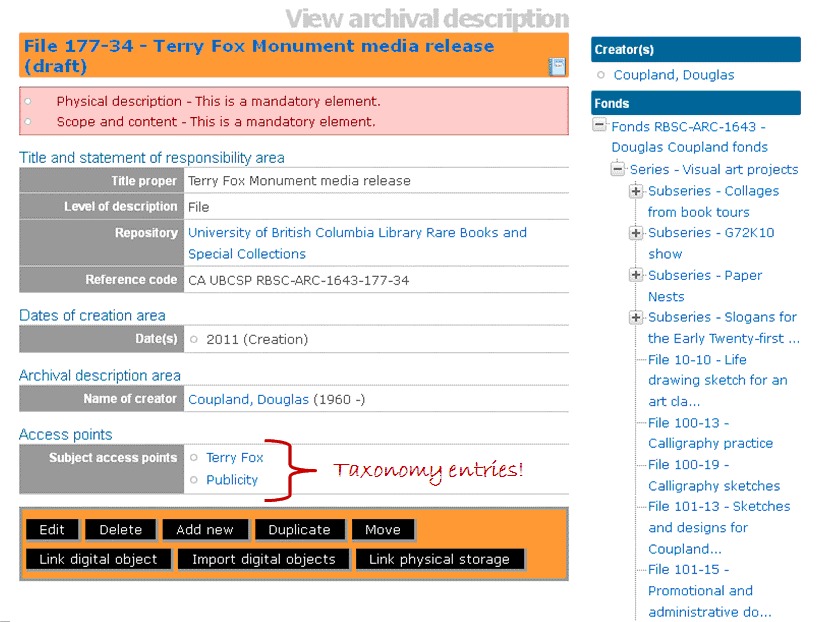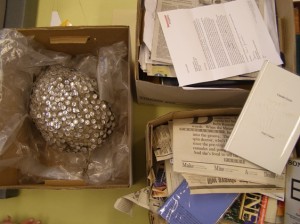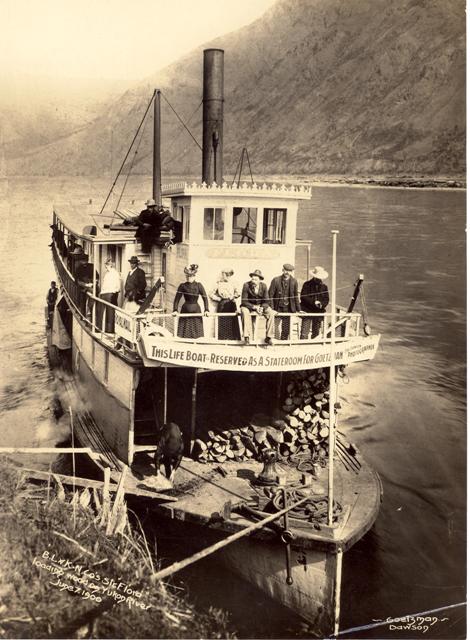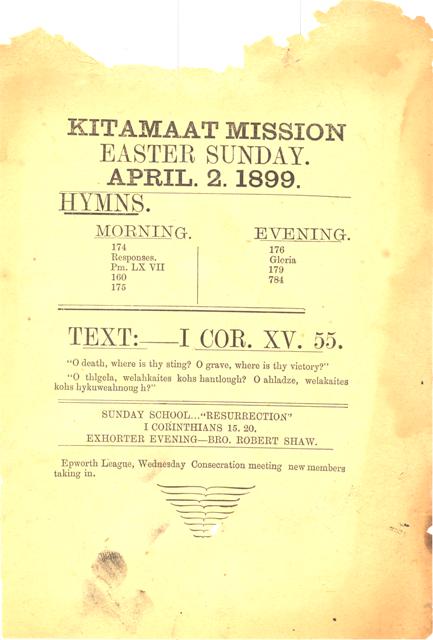
We’re very pleased to announce a recent addition (or accrual to use archival language) to the archives of Douglas Coupland (or the Douglas Coupland fonds, again to use the archival terminology). We have been very fortunate to continue our relationship with Doug Coupland since we first acquired his archives in 2008, but for the first time we have decided to shine a light on what happens to archival material between coming in the doors and being made available to users in the reading room. We think it’s particularly interesting and exciting to do this with the Douglas Coupland fonds because of the wide range of documentation he creates.
We’re fortunate also to have three student archivists jointly handling this project over the summer: Dan Gillean, Laura Hebert and Sarah Hillier are all students from the School of Library, Archival and Information Studies. They will be writing posts on this blog every week or so to keep you updated on their progress. You can see all of our posts on this project by browsing for the Coupland tag on our blog.
Without further adieu, our student archivists:
“On Thursday, June 21st a large shipment of banker’s boxes and strangely shaped packages arrived at UBC Rare Books and Special Collections. The twenty-six pieces comprise the recent accrual to the already substantial Douglas Coupland fonds. Because of Coupland’s varied range of medium (and we mean varied – everything from large-scale sculptures to screenplays to clothing lines) the contents of these boxes present many unique questions from the archival perspective.
“So how to tackle such a diverse accumulation of content? We have been tasked with the arrangement and description of this material and hope to collaboratively produce a clear picture of Coupland’s creative process through our treatment of the accrual. A little about us…
“Dan Gillean – MAS/MLIS Student at SLAIS, entering 3rd year
I’ve been working as a Student Archival Assistant since September of 2011, processing a large accrual from the provincial New Democratic Party. I’m particularly interested in the arrangement challenges we will encounter with this project – for example, how will we know if that flattened box of macaroni was meant for a collage, used in one of the Canada photographs, or kept as a reference item for one of his many narrative projects? What if the answer is all three? More importantly, how can we best indicate these linkages and conjectures to our patrons at RBSC?
“Laura Hebert – MAS/MLIS Student at SLAIS, entering 3rd year
I began my work as a Student Archive Assistant at RBSC just over a year ago. In my time here I have worked on the processing of a number of fonds and collections, both of a personal and organizational nature. Of particular interest to me are the items in this accrual that are atypical in terms of what we see in Special Collections. What are the best ways to treat these items that are so far from the textual record and how can we effectively communicate their context?
“Sarah Hillier – MAS/MLIS Student at SLAIS, entering 3rd year
I started working at RBSC as a Student Archives Assistant about a year ago. Most recently I’ve worked on the arrangement and description of a new accrual to the Arsenal Pulp Press fonds. Of interest to me regarding the Douglas Coupland fonds is tackling the challenges associated with the proper storage and preservation of non-traditional archival materials, i.e. a bejeweled hornet’s nest, a digital orca, and a styrofoam leg
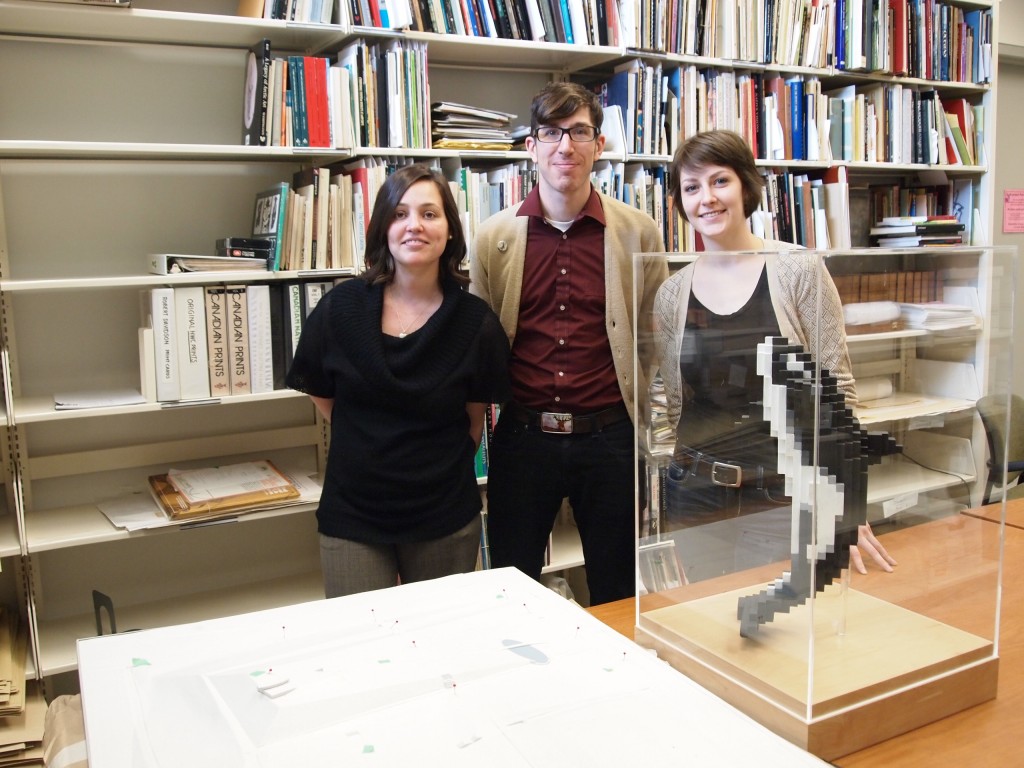
Our student archivists: Sarah, Dan and Laura
“Influenced by Coupland’s own fondness for the blog format, we will chronicle our journey here. Follow our progress as we unpack the work of the prolific writer and artist.”
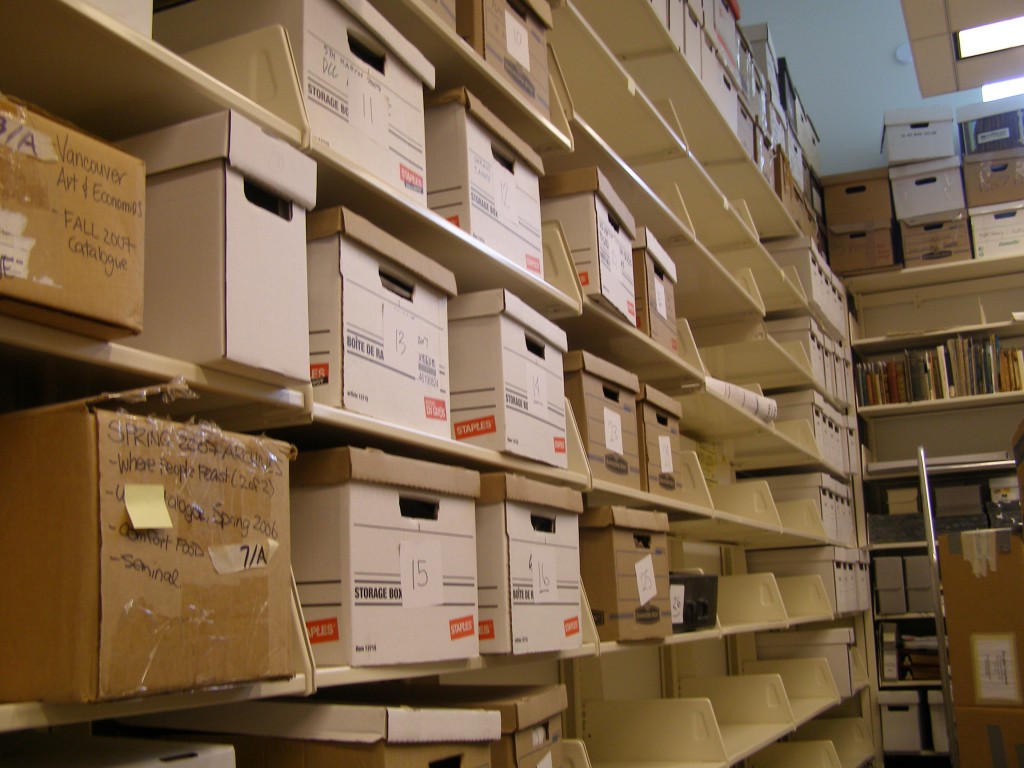
Accrual to the Douglas Coupland fonds, awaiting processing

